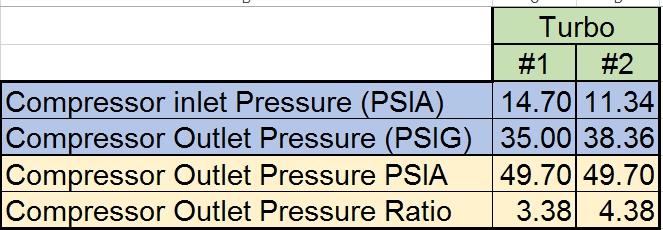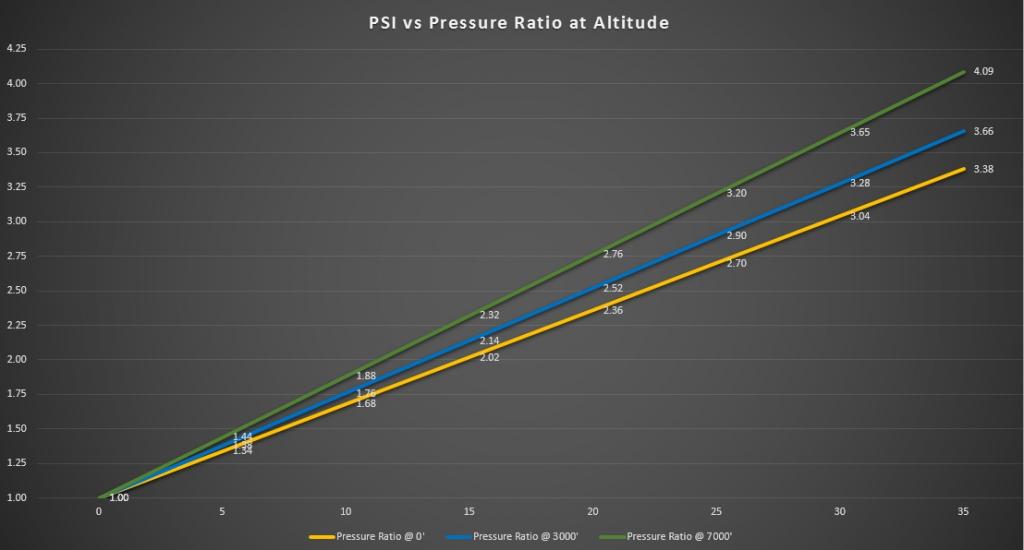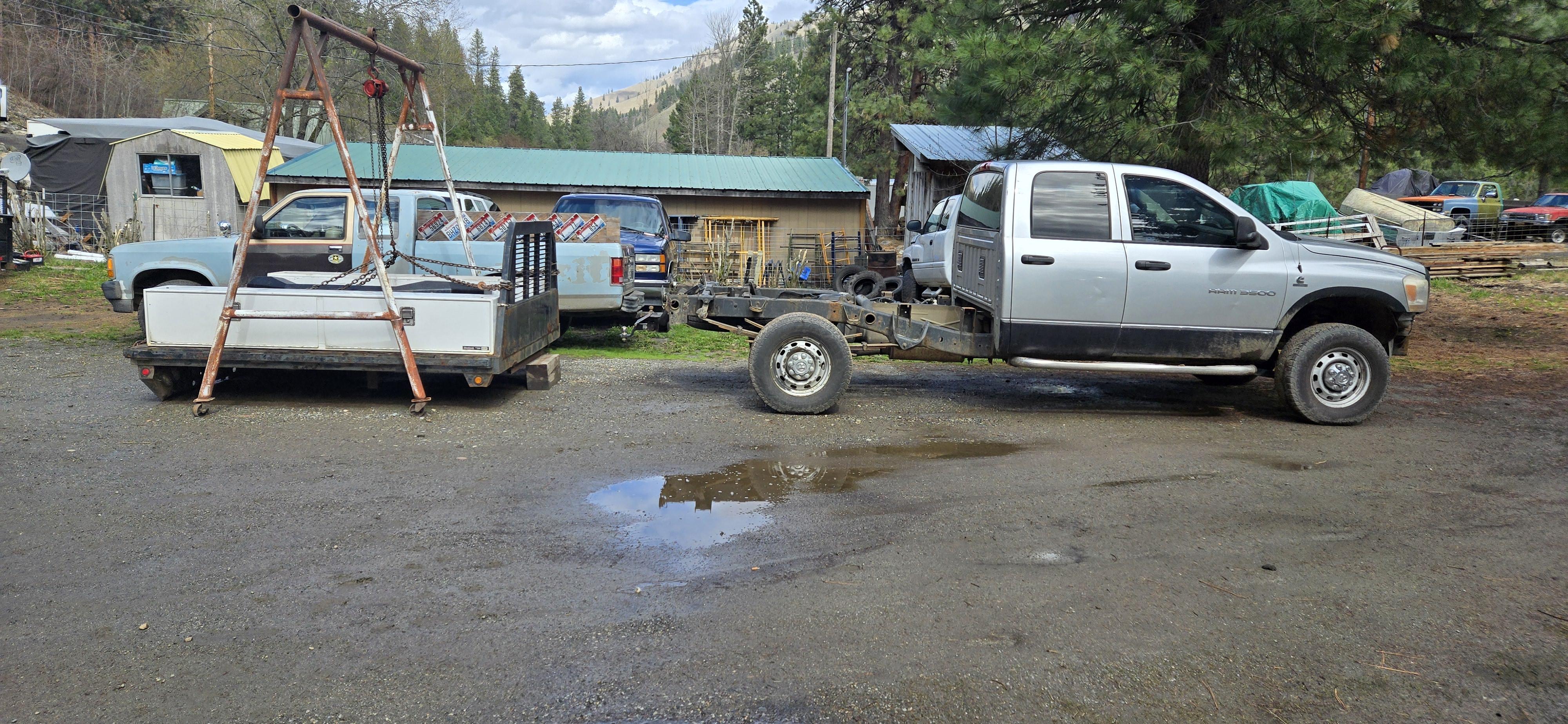Effect of Altitude on a Turbo Diesel
This Article covers the effect of being at higher altitude in a Turbo Diesel powered vehicle. The princples work the same on a Cummins 24v vs common rail and powerstroke or duramax.
First thing we need to look at why altitude plays a role. We need to remember that at sea level there is about 14.7 psi of pressure in the air you breath. You can figure out this number by doing some basic math seen below.
I am gonna quote some wiki info from https://en.wikipedia.org/wiki/Pounds_per_square_inch to show how PSIA is caluclated
"
The pound per square inch or, more accurately, pound-force per square inch (abbreviations: psi, lbf/in2, lbf/in2,lbf/sq in, lbf/sq in) is a unit of pressure or of stress based on avoirdupois units. It is the pressure resulting from a force of one pound-force applied to an area of one square inch:
1 psi =  =
=  ≈ 6894.757293168 N/m²
≈ 6894.757293168 N/m²
Therefore, one pound per square inch is approximately 6894.757 Pa.
Now converting the psi to standard atmospheres:
1 atm =  =
=  ≈ 14.69594877551 psi
≈ 14.69594877551 psi
Therefore, 1 atmosphere is approximately 14.696 pounds per square inch.
Pounds per square inch absolute (psia) is used to make it clear that the pressure is relative to a vacuum rather than the ambient atmospheric pressure. Since atmospheric pressure at sea level is around 14.7 psi, this will be added to any pressure reading made in air at sea level. The converse is pounds per square inch gauge or pounds per square inch gage (psig), indicating that the pressure is relative to atmospheric pressure. For example a bicycle tire pumped up to 65 psi above local atmospheric pressure (say, 14.7 psia locally), will have a pressure of 65 + 14.7 = 79.7 psia or 65 psig.[1][2] When gauge pressure is referenced to something other than ambient atmospheric pressure, then the units would be pounds per square inch differential (psid).
"

and a pretty graph

Now as we all know there is less air the higher in altitude you go. But the real question is how much does it really matter? I mean the turbo compresses air anyways so does a little less atmospheric pressure really matter?
Well the answer is yes absolutely it matters.
A lot of people say that when you have a NA engine it matters a ton but on a turbo engine it isn't as big of a deal. While that is somewhat true we can see below that turbo engines also suffer a good deal.
So using the below you can see in the "PSIA" column the atmospheric pressure at a given altitude. As expected we see about 14.7 PSIA at 0 feet. If we look down the chart we can see at 3000' altitude you should have 13.17 psia or about 1.5 psi less than at sea level ( 14.7 - 13.17 = 1.53 psi). Now lets step up to 7000' were a lot of us Rocky Mountian guys live. The PSIA at 7000' is ~11.34 or about 3.5 psi less than at sea level ( 14.7 - 11.34 = 3.36 PSI)
Well those numbers are all fine and dandy, but what does that actually mean?
So lets think of this in laymens terms and just add the PSIA to the overall boost on the gauge IE: if your gauge reads 30 PSI you actually have 44.7psi at sea level ( 30 Psi + 14.7 psia = 44.7 psi).
Lets say now that you are sitting idle at a stop light. At sea level sitting at a stop light you have a total boost of 14.7 psi ( 0 psi from the turbo + 14.7 psia = 14.7 psi).
Lets do the same with 3000' At idle you now only have 13.17 psia at idle.
And at 7000' you have a whooping 11.34 psia at idle.
So in order for the guy at 7000's to have the same boost as the guy at sea level the turbo will need to create that extra 3.5 psi.
So to sum it up the guy at sea level has the same amount of boost going into the engine at idle as the guy at 7000' when his gauge is reading 3.5psi. So you can think about this all in terms of, How long does your truck take to make 3.5 psi worth of boost? The time it takes for your truck to make that boost is how much quicker the guy at Sea Level will spool. Right off the line the guy at sea level is already "spooling" 3.5psi worth of boost compared the the guy at 7000's altitude.
You could also think of it as if you lined 2 trucks up and told them to drag race, but told one driver that he could brake boost to 3.5psi while the other truck had to leave the line at idle. It is easy to see which truck will leave the line quicker.
As we can see this means that the turbo will have to work harder when it is at a higher altitude. From a stop the turbo at 7000' is automatically at a 3.5psi disavantage to the guy at sea level.
Not only does altitude have an effect on Off idle performance, but it also has an effect on the upper end of the turbo map. The turbo has a map that shows how much air it will flow. How To Read Turbo Map
So we need to consider that the in order for the turbo at 7000' to make 30 psi on the boost gauge it will actually have to make 33.5psi of boost. Fine and dandy right? What's another 3.5 psi worth of boost on a diesel right? Well if we consider that each turbo has it's limits that it flows air, we know that while the turbo at sea level might be efficent at 30 psi of boost, the turbo at 7000' might be out of it's map when the gauge hits 30psi as it actually has to create 33.5 psi total pressure. The turbo at 7000' altitude will become inefficent 3.5psi sooner than the turbo at sea level.
If we use the rule of thumb and say every 10psi of boost is worth 100 hp at the crank we say say that a truck at 7000' will make roughly 35 hp / 70tw less than the same truck at sea level if the turbo is kept within the same map both times.
Numbers are fine and dandy, but lets see some proof to back all of this up.
First the spec's on the truck.
- 2000 ram 2500 24v Cummins
- 3.55 rear end 47re tranny
- 7x.009 DFI vco injectors
- 235/85/16 tires
- Quadzilla tuner ( turned off for the videos)
Here are some Videos.
0' altitude
I was unable to ge ta video of this, but I can say that smoke output was pretty much 0 at sea level I would say the DFI 7x.009 injectors were Less than a stock truck with a timing box with no canbus fueling. You can see the difference between 2000' and 7000' so keep that in mind.
2000' Altitude
7000' Altitude
As you can see the difference is HUGE.
So to sum up everything. Altitude plays a HUGE role in how your turbo diesel runs. A truck at Altitude will smoke more, build boost slower, run out of boost faster AKA It's map.
So what can we do about it? Truthfully, Nothing. You need to build your truck with this in mind. If you live at high altitude you might not want the same turbo that you would at sea level.





There are no reviews to display.